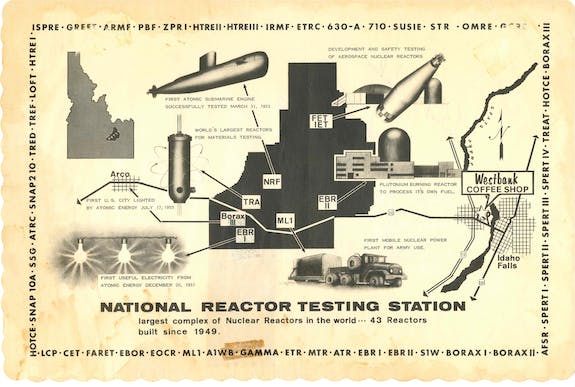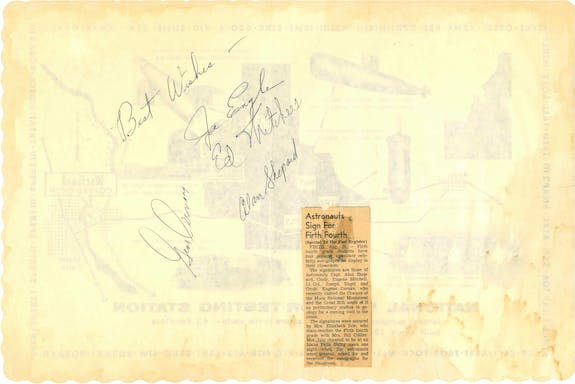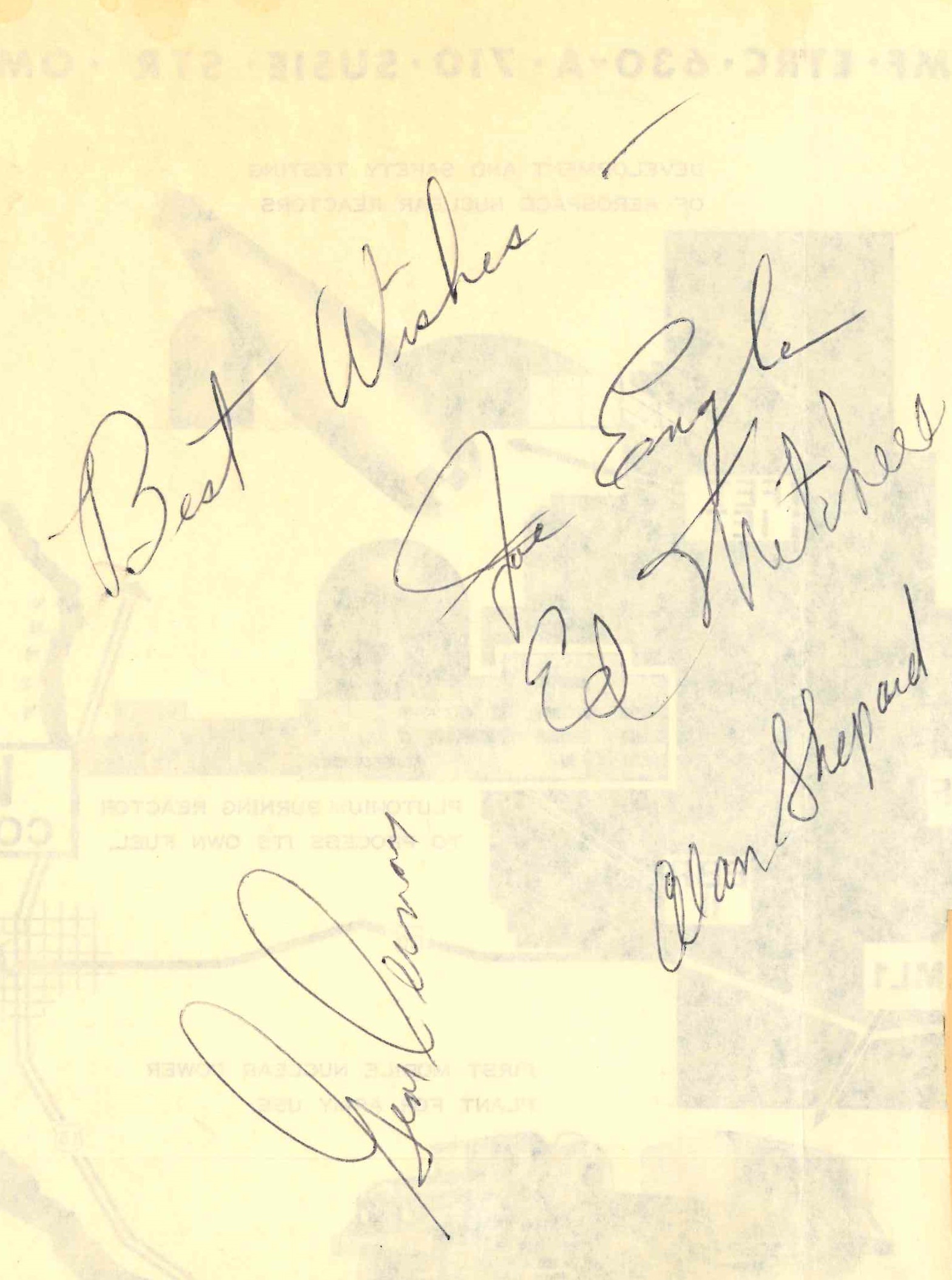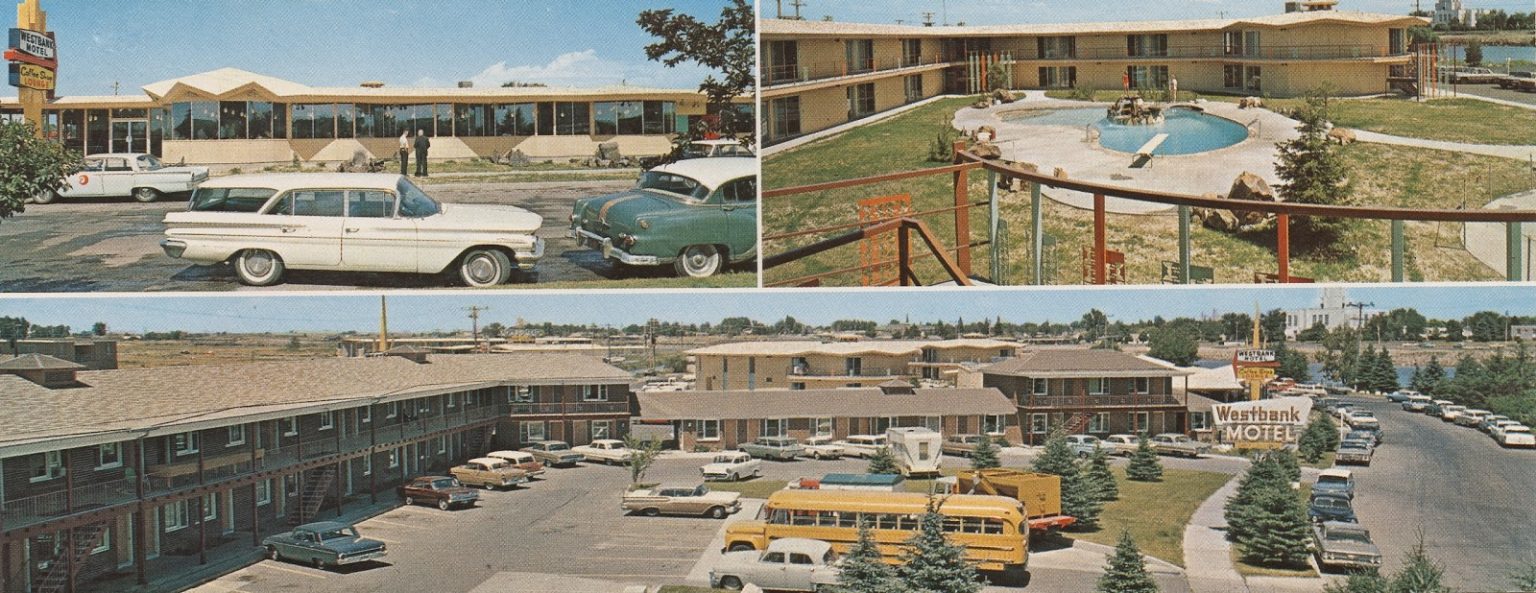There are days when people feel overwhelmed by all the stuff they have and decide to do something about it. For Jim “Wojo” Wojciechowski, a utility infrastructure and support manager at Idaho National Laboratory’s Materials & Fuels Complex, just recently it meant going through boxes of old photos and memorabilia that had belonged to his late mother-in-law, Elizabeth Hill Ivie.
On his trip down memory lane, he pulled out one particularly curious item: a late-1960s placemat from Idaho Falls’ Westbank Café. Looking at the front, it’s obvious that Westbank owner Ferris Clark was proud to have his café affiliated with the National Reactor Testing Station (which became Idaho National Engineering Laboratory in 1977). “Largest complex of Nuclear Reactors in the world … 43 built since 1949,” it proclaims. Around the edge are all of the reactors’ acronyms, from ASFR to ZPR I.

On the back, however, are the autographs of four NASA astronauts: Joe Engle, Ed Mitchell, Gene Cernan and Alan Shepard. Little more than a month after the first moon landing, Apollo 11, in July 1969, the four had been dispatched to Idaho to visit Craters of the Moon National Monument in preparation for Apollo 14 in 1971.
A yellowed clipping from the Idaho Falls Post-Register attached to the placemat tells the story. While eating at the Westbank (“By the Tumbling Waters”), Ivie realized there were celebrities in the restaurant. Astronauts were a big deal in 1969, and as far as big names went, Shepard was on a par with Neil Armstrong. He was a member of the original Mercury Seven and the first American to go into space, in 1961.
With nothing else available, Ivie grabbed a placemat. The autographs were not just for herself, but for her fourth-grade class at Firth Elementary School (hence the headline on the newspaper story, “Astronauts Sign For Firth Fourth”).

The NASA astronauts, all former test pilots, had little experience with geology, and since they would be collecting rocks on the moon to bring home (limited quantities, of course), the planners at NASA had decided Craters of the Moon would be a good place for them to practice spotting scientifically interesting specimens.
Apollo 14’s geologic lunar target was its Cone Crater in the Fra Mauro highlands. The plan was for the Shepard and Mitchell to take a handcart up the slope to the rim, 300 feet (91 meters) above the landing site, then collect rocks that might have flown up from the moon’s bedrock as a result of a meteor’s impact millions of years earlier.
The trip to the rim was harder than expected. Rocks littering the slope forced them to carry the cart, and the steep climb meant they had to rest often. When their oxygen supply started looking low, they turned back. When the pictures were analyzed later, geologists estimated the two could have reached the rim if they’d gone another 100 feet.
In the end, the mission may be best remembered for Shepard teeing off two golf balls with an improvised 6 iron. Even with his swing limited by the bulky spacesuit, he reported one of the balls going “miles and miles” thanks to the lunar gravity, one-sixth as strong as the Earth’s.
In 1999, Cernan, Engle, and Mitchell (Shepard had died the previous year) returned to Craters of the Moon to help celebrate the national monument’s 75th anniversary. According to the National Park Service article, all three talked about how beneficial their training had been and how it had prepared them well for their missions to the moon. (Cernan was the last astronaut to walk on the moon, with Apollo 17. Engle was supposed to accompany him, but got bumped in favor of Harrison Schmitt, a Ph.D.-level geologist. “When you think about it, the lunar missions were geology-oriented,” he told the New York Times in 1981.)

NASA still uses Craters of the Moon for research. In 2014, scientists from the Ames Research Center began a joint five-year study. The first project, FINESSE (Field Investigations to Enable Solar System Science and Exploration), is to conduct field experiments and procedures that may be used by astronauts if they ever visit Mars. The other, BASALT (Biologic Analog Science Associated with Lava Terrains), aims to examine the habitability of terrains similar to that of Mars.
As for Wojciechowski, he’s looking for anyone who might be interested in taking his little piece of history off his hands. “If I were to keep it, it would just go back in a box,” he said.





